You’re missing out if you don’t have shrubs around your home. Shrubs can add color, fragrance, and even protection from unwanted attention.
Shrubs can create interesting patterns and designs that please the eye. Picking the right spot for the right shrub can make or break your curb appeal.
There are two varieties of shrubs:
- Angiosperms are flowering shrubs
- Gymnosperms are non-flowering shrubs
While flowering shrubs can wow you with the color of their blooms and sometimes with a beautiful scent, non-flowering shrubs also have a lot of beauty.
With foliage ranging in color from pale to dark green, striped, sporting pinks, blues, and purples, landscaping shrubs allow you to create a work of art in your front yard (backyard, too!) Here are 15 ideas for landscaping with shrubs to boost your curb appeal.
1. Bursting Heart Burning Bush (Euonymus americanus)
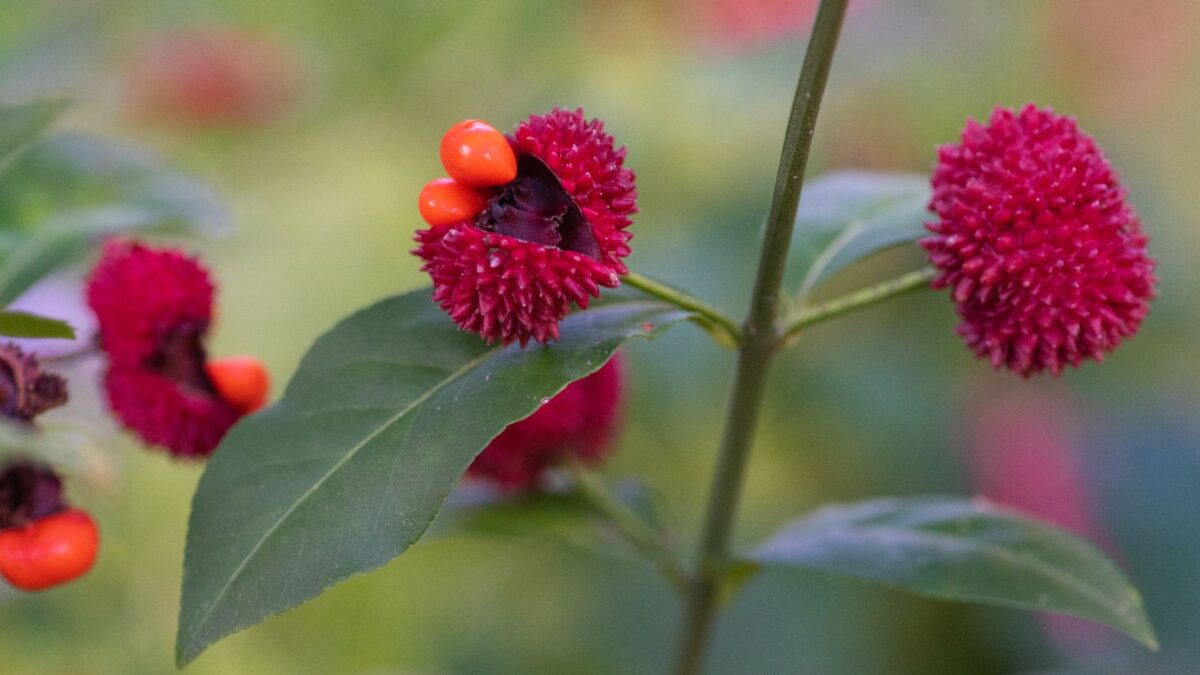
Image Credit: Depositphotos
Also called strawberry bush, this native shrub typically grows up to 6 feet tall and about 3–4 feet wide, making it a manageable yet eye-catching addition to the landscape. In spring, it produces small yellow-green flowers that develop into unique, warty-looking capsules—often likened to strawberries—which split open to reveal bright red seeds in fall. Its green foliage turns a brilliant crimson red in autumn, adding vibrant seasonal color.
Strawberry bush thrives in partial to full shade and prefers moist, well-drained soil, making it a great choice for shaded foundation plantings or woodland borders. Its compact size and multi-season interest make it ideal for boosting curb appeal, especially in naturalistic or native-inspired front yard designs.
2. Forsythia (Forsythia spp.)
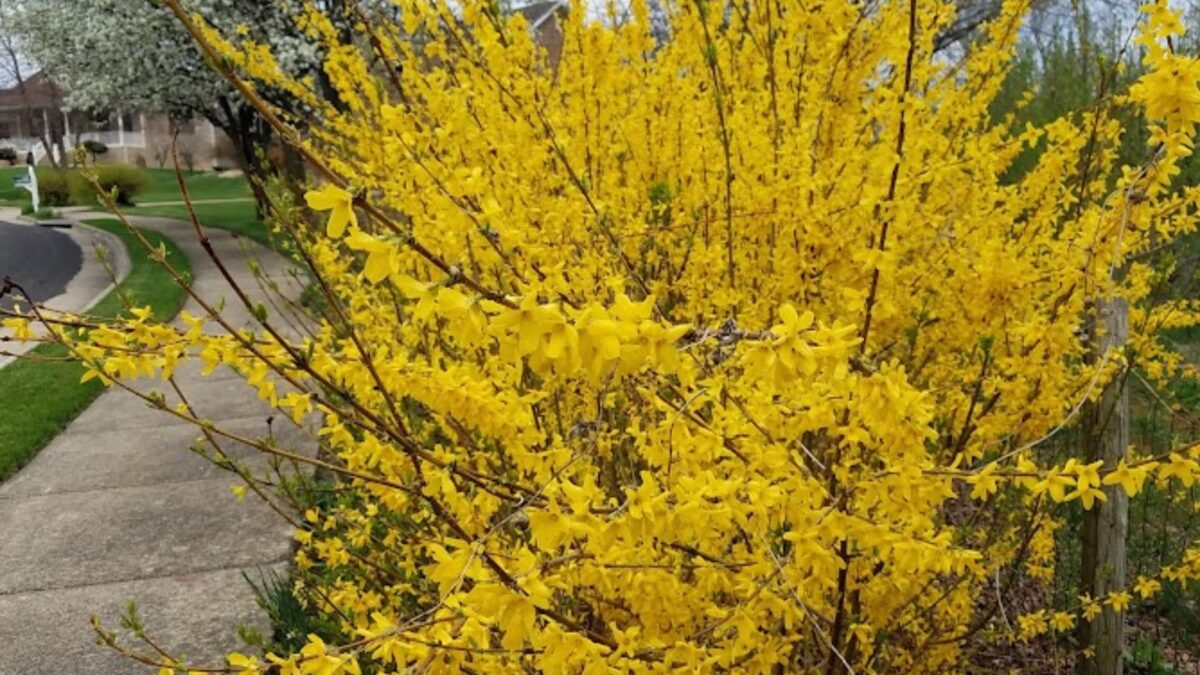
Image credit: Backyard Garden Lover.
Forsythias love full sun and are among the first shrubs to bloom in early spring, often before their leaves even emerge. Their bright yellow flowers cover the bare branches in a cheerful display, providing a burst of color and life after the gray winter months—a true sign that spring has arrived.
These fast-growing shrubs can reach 6 to 10 feet tall and wide, making them perfect for property borders, hedges, or large foundation plantings. Forsythias prefer well-drained soil and benefit from a light pruning right after flowering to maintain their natural arching shape.
When planted near the front of the home, forsythias offer instant curb appeal with their golden blooms, especially when massed or used to flank a walkway. Their dramatic early color draws attention and sets a vibrant tone for the rest of the landscape to come.
3. Knockout Roses (Rosa radrazz)
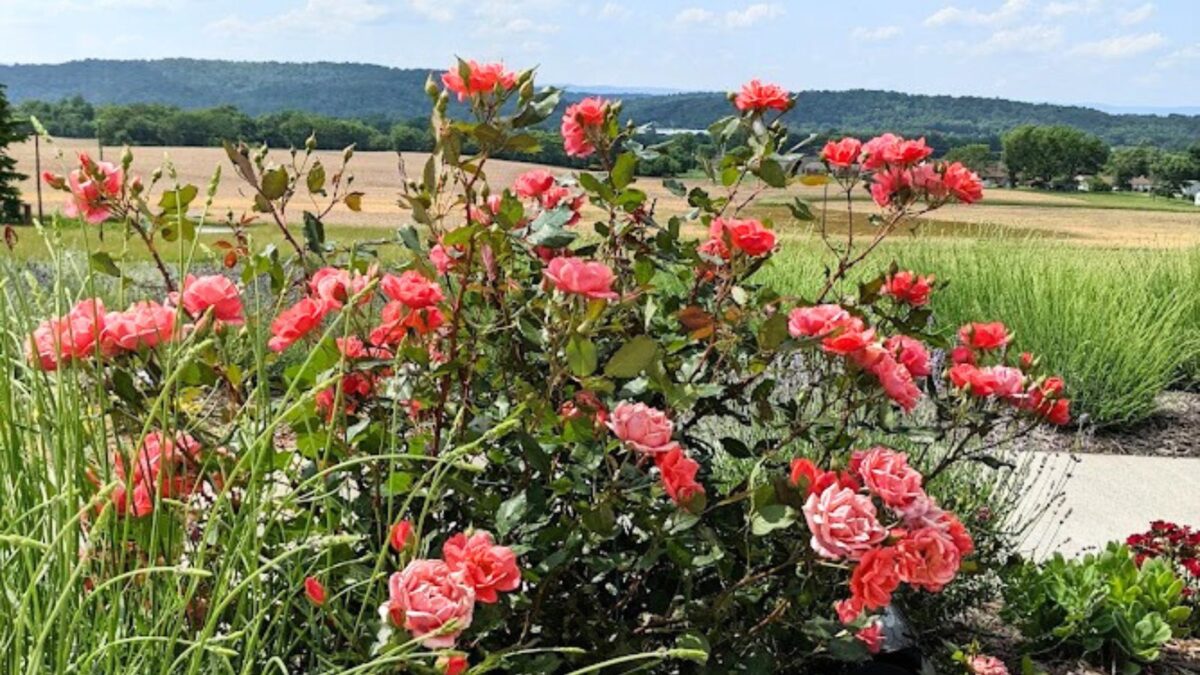
Image credit: Backyard Garden Lover
These Knock Out roses are a favorite for good reason—they’re low maintenance, disease-resistant, and bloom continuously from spring through fall. Available in a wide range of colors, including soft pink, coral, bright red, and even yellow, they add vibrant, long-lasting color to any landscape.
One of their standout features is that they’re self-cleaning, meaning you don’t need to deadhead spent blooms to keep them looking tidy and blooming strong. Just plant them and enjoy the show with minimal upkeep.
knock Out roses grow about 3 to 4 feet tall and wide, making them perfect for foundation beds, borders, or grouped in mass plantings. Their compact size and lush, repeated blooms make a bold impact near front porches, along walkways, or anywhere you want to boost curb appeal with color and structure.
Check out these ideas for landscaping with knockout roses.
4. Lilac (Syringa)
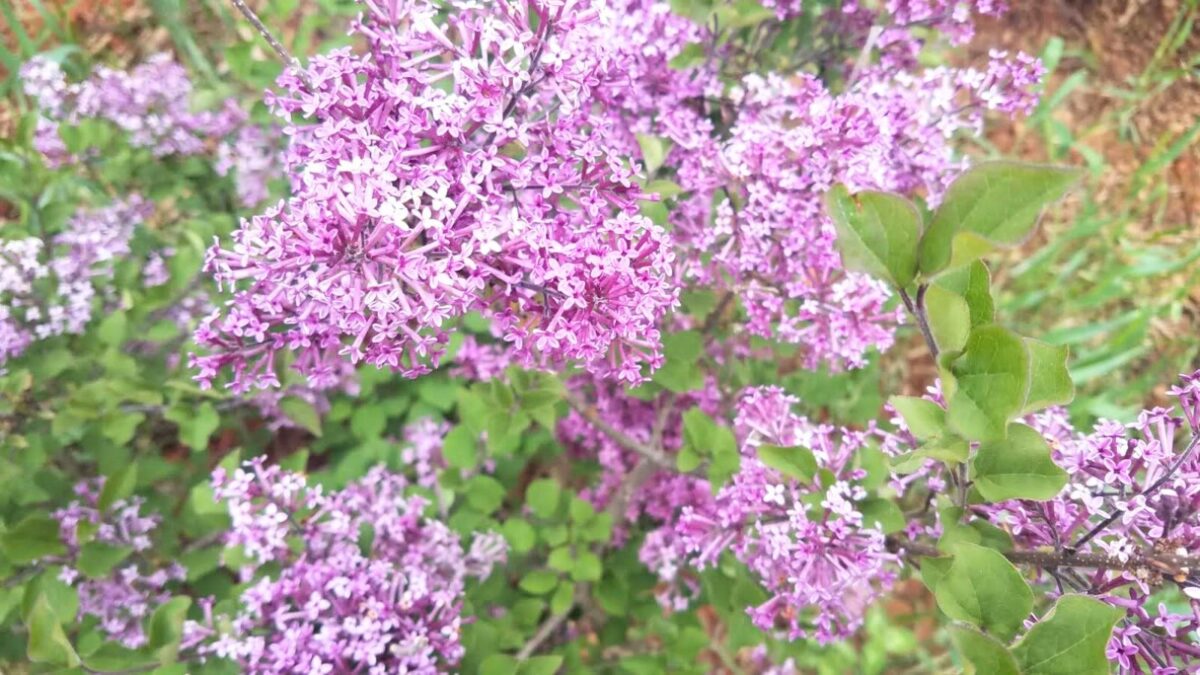
Image credit: Backyard Garden Lover
One of the most carefree and beloved spring-flowering shrubs, lilacs not only deliver stunning visual impact, but also fill the air with a sweet, nostalgic fragrance that signals spring is in full swing. Their classic charm and scent make them a timeless favorite in any landscape.
Lilacs come in a variety of bloom colors—from pale lavender to deep purple, red-violet, and even crisp white—so you can match them to your home’s exterior or your personal style. You can also choose between single or double blooms, depending on the look you love.
These shrubs thrive in full sun and well-drained soil, and many varieties grow between 6 to 12 feet tall, making them great for privacy screens, property lines, or as a flowering backdrop. Dwarf and reblooming types are also available for smaller yards or front garden beds.
Lilacs make a big impression near entryways, driveways, or fences, where their beautiful blooms and signature scent can be appreciated up close. Their classic look adds elegance and cottage-style charm, instantly enhancing curb appeal in the spring landscape.
5. Black Chokeberry (Aronia melanocarpa)
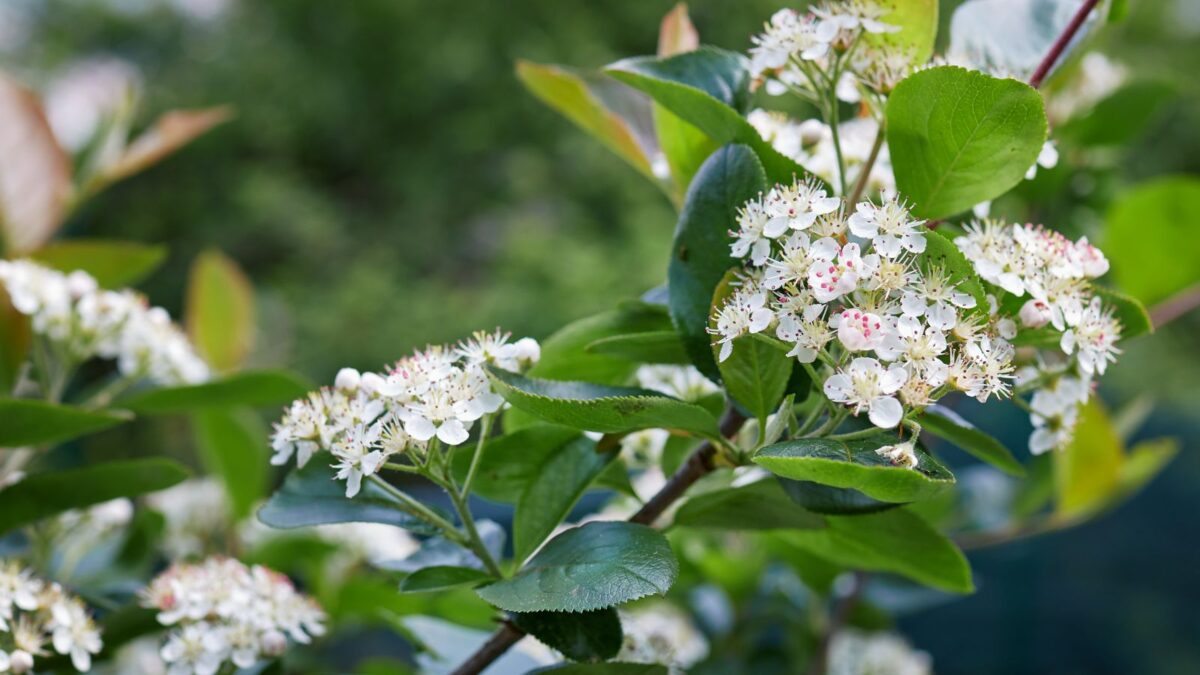
Image Credit: Depositphotos
Black chokeberry (Aronia melanocarpa) is a hardy, multi-season shrub that grows up to 6 feet tall and wide, making it a great choice for foundation plantings, mixed borders, or naturalized areas. In spring, it produces clusters of delicate white flowers, which give way to glossy black berries in late summer, beloved by birds and beneficial pollinators alike.
Its dark green foliage provides a lush backdrop through the growing season, then transforms into brilliant shades of orange, red, and deep purple in fall, adding a fiery touch to your autumn landscape. This dramatic seasonal color shift makes it a standout for curb appeal, especially when planted in groups or along pathways.
Black chokeberry is also low-maintenance, drought-tolerant once established, and deer-resistant, thriving in full sun to part shade and a variety of soil types, including wet or poorly drained areas.
6. Compacta Burning Bush (Euonymus alatus ‘Compactus’)
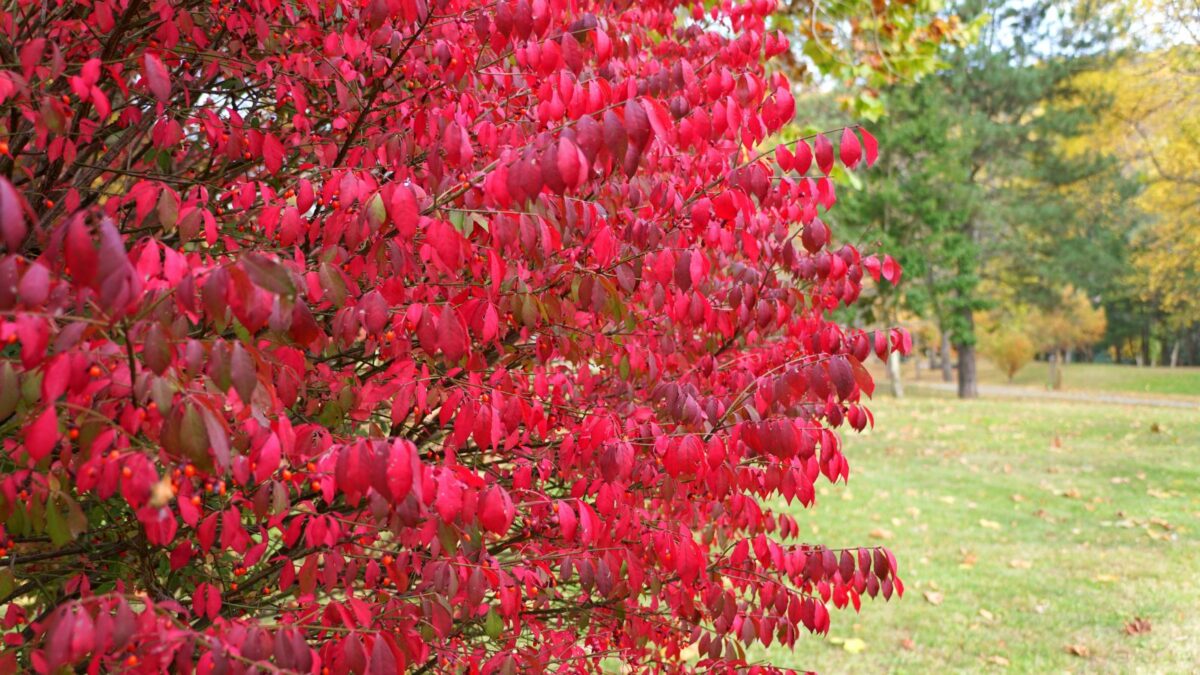
Image Credit: Depositphotos
The burning bush is a striking deciduous shrub known for its brilliant fall foliage. Growing between 8 and 10 feet tall, it has a dense, rounded shape that makes it ideal for hedges, screens, or bold accent plantings. While its foliage remains medium green through spring and summer, it’s the crimson red transformation in autumn that truly steals the show, earning it its fiery name.
In addition to its fall color, burning bush can produce small, inconspicuous reddish flowers in spring, followed by tiny red-orange berries in the fall that add further seasonal interest. It thrives in full sun to partial shade and prefers well-drained soil, although it’s highly adaptable and relatively low-maintenance once established.
When used in the front yard, burning bush makes a dramatic statement that can instantly elevate curb appeal, especially when planted in a row or flanking entryways. Its intense color contrast in autumn draws the eye and adds structure to your landscape year-round.
Note: Burning bush is considered invasive in some regions, so be sure to check local guidelines or opt for non-invasive alternatives or sterile cultivars where needed.
7. Common Witch Hazel (Hamamelis virginiana)
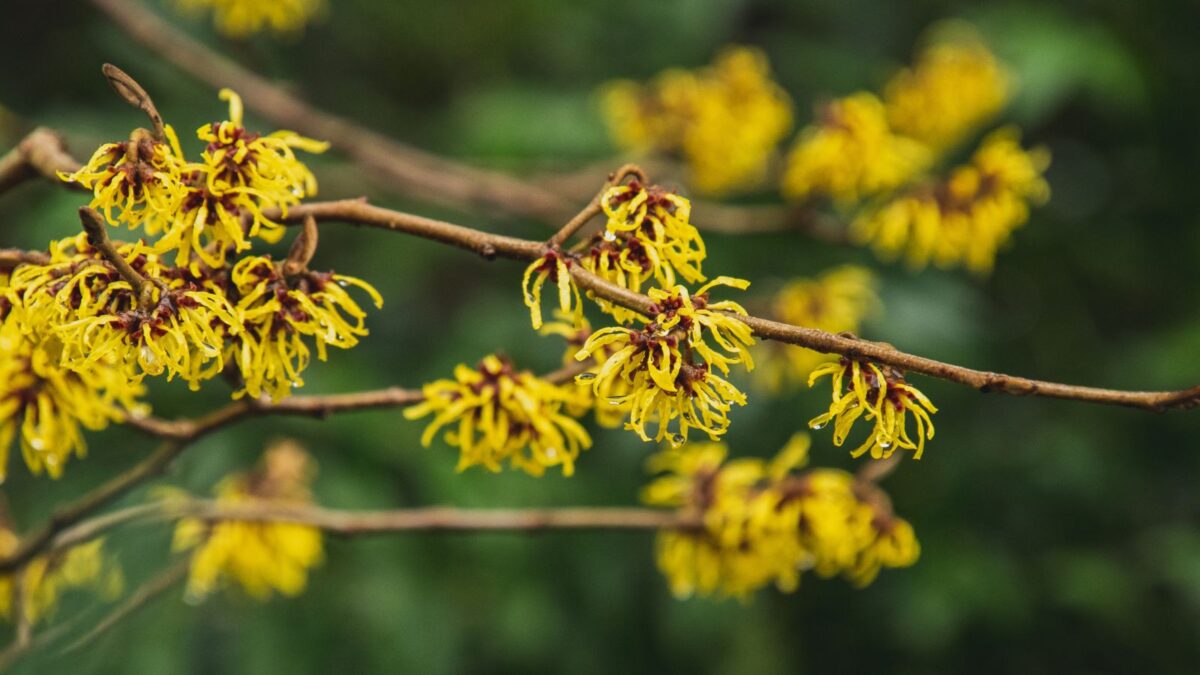
Image Credit: Depositphotos
Witch hazel is a unique, multi-season shrub that grows between 8 to 12 feet tall, with a graceful, spreading form that adds character and texture to the landscape. Its most remarkable feature is its fragrant yellow flowers, which bloom in late fall or winter, often when little else is flowering, bringing unexpected brightness to the cold season.
During the growing season, witch hazel’s green leaves provide a lush, full backdrop, then turn a golden yellow in autumn, complementing its spidery blooms and adding even more visual interest. This long-lasting color makes it a valuable addition to foundation beds, borders, or woodland edges, where it can shine through multiple seasons.
Witch hazel thrives in full sun to partial shade and prefers moist, well-drained soil, but it’s also adaptable and relatively low-maintenance. Its off-season blooms and glowing fall foliage make it a fantastic shrub for boosting curb appeal with something truly unexpected and eye-catching.
8. Redleaf Japanese Barberry (Berberis thunbergii var. atropurpurea)
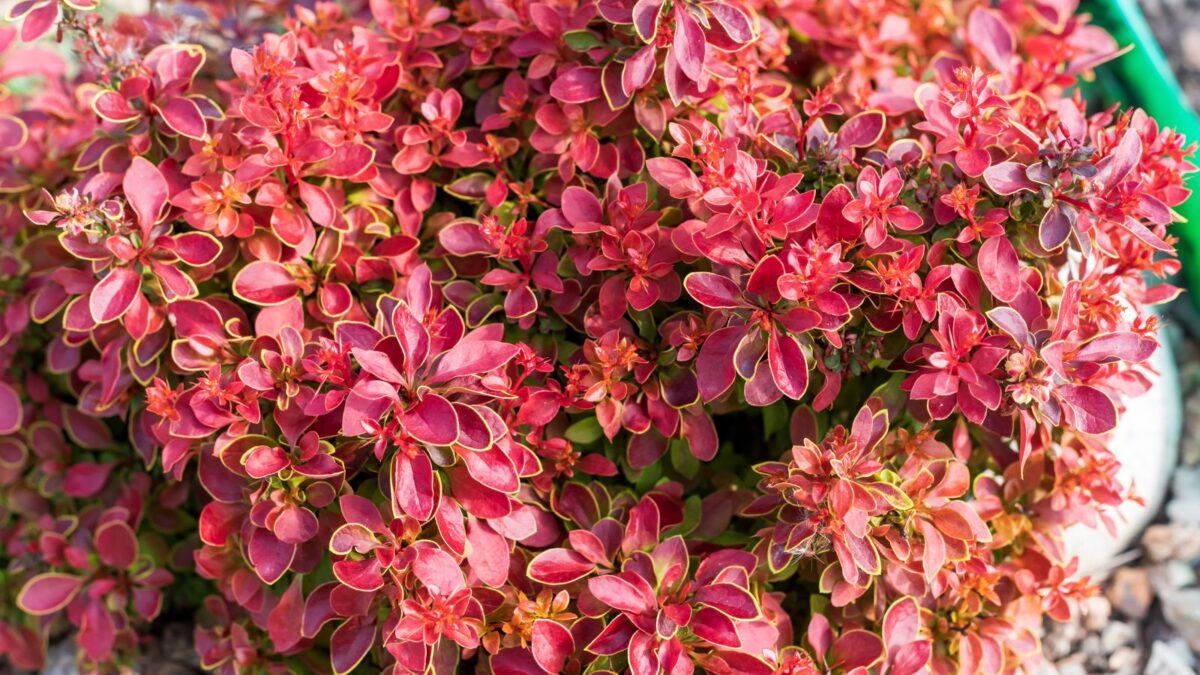
Image Credit: Depositphotos
This compact shrub offers a big impact in a smaller package, making it perfect for front beds, borders, or small-space gardens. Its vibrant red foliage adds bold color throughout the growing season, gradually deepening to a rich purple-red in autumn for a dramatic fall display. In April, it produces small yellow flowers that contrast beautifully with its colorful leaves, adding a delicate yet eye-catching spring accent.
Depending on the variety, this shrub typically grows 2 to 4 feet tall and wide, making it easy to tuck into tighter spaces or use in mass plantings for color and texture. It thrives in full sun and well-drained soil, and it’s also low-maintenance and drought-tolerant once established.
Its compact size, striking foliage, and multi-season interest make it an excellent choice for curb appeal, especially when planted in front yards, along walkways, or mixed with evergreens for contrast.
9. Rosemary (Salvia rosmarinus)
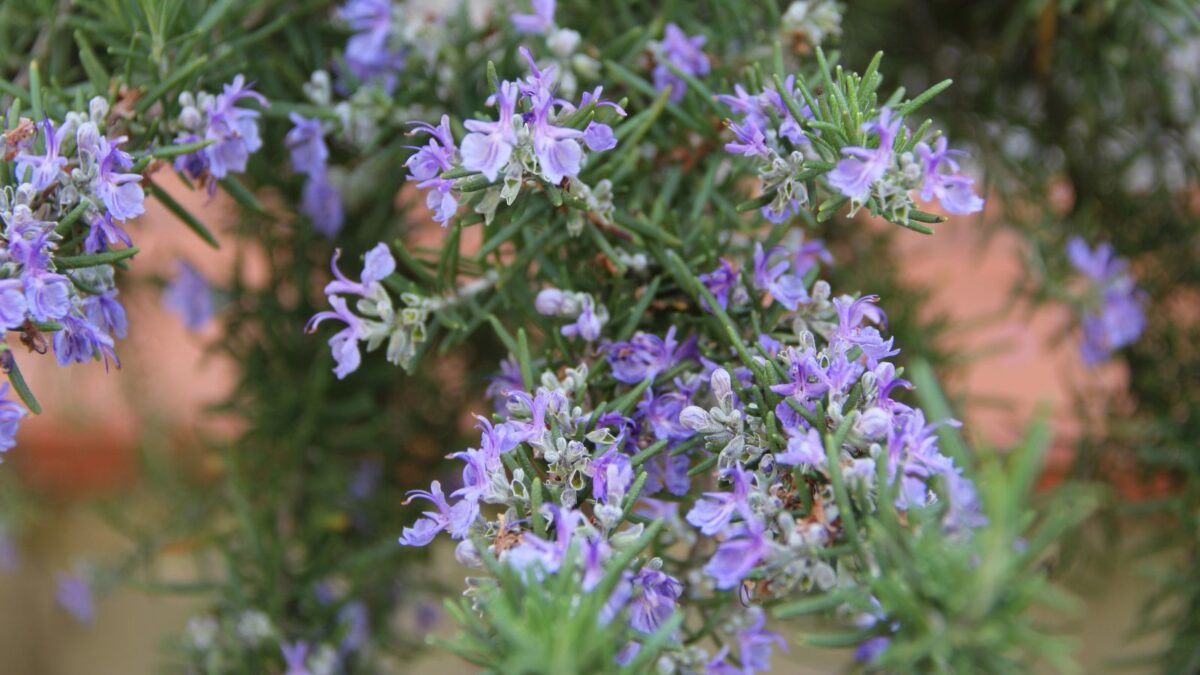
Image Credit: Depositphotos
Rosemary is a fragrant Mediterranean shrub that brings both beauty and function to the landscape. Growing up to 5 feet tall and wide, it features needle-like green foliage that stays evergreen in mild climates, offering year-round color and texture. In spring and sometimes again in late summer, rosemary blooms with delicate white, pink, or pale blue flowers that attract pollinators and add a soft touch of color.
Thriving in full sun and well-drained soil, rosemary is drought-tolerant once established and perfect for low-maintenance, water-wise landscapes. Its tidy, upright form makes it an excellent choice for foundation plantings, herb gardens, borders, or even clipped into informal hedges.
When placed near walkways or entry points, rosemary does double duty: it boosts curb appeal with its textured greenery and subtle flowers while also offering a pleasant scent and edible leaves for cooking.
Here are 10 ways to use rosemary flowers.
10. Butterfly Bush (Buddleja)
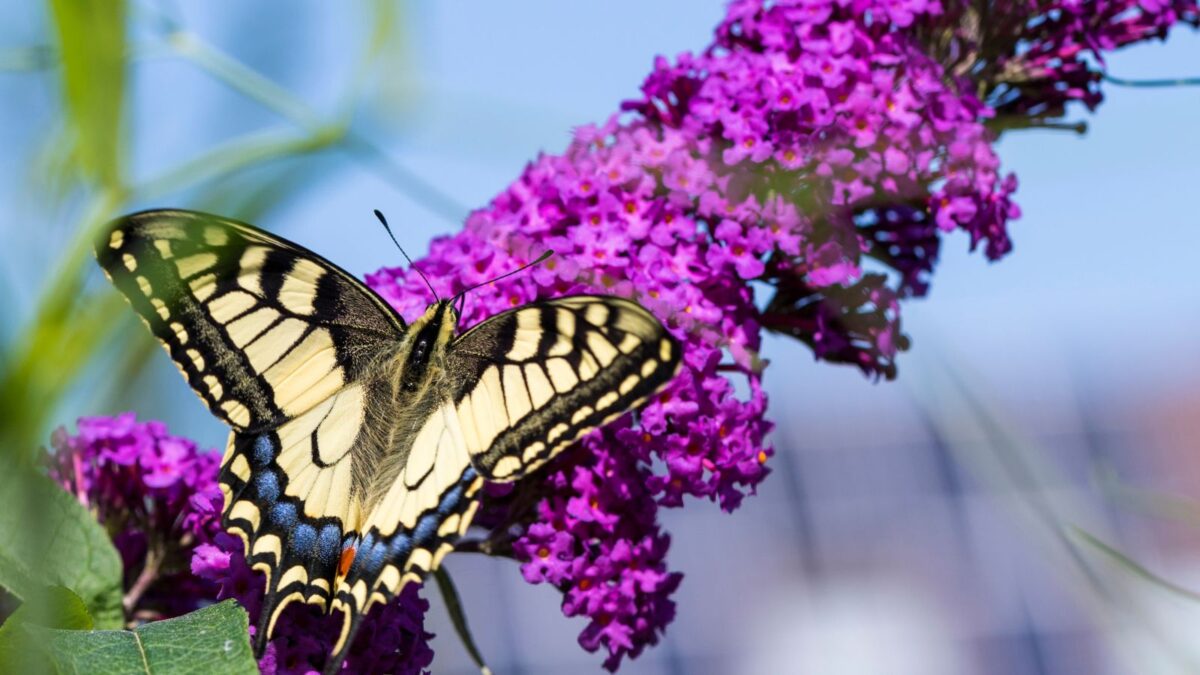
Image Credit: Depositphotos
This tropical beauty can grow up to 6 feet tall, making it a striking addition to gardens that embrace bold, lush foliage and vibrant color. It produces showy violet blooms that add a splash of tropical elegance and attract pollinators like butterflies and hummingbirds.
Thriving in warm climates with plenty of sunlight, this plant prefers well-drained, moist soil and benefits from regular watering during the growing season. Its height and colorful flowers make it perfect for use as a standalone specimen, a dramatic backdrop in mixed borders, or a focal point near patios and entryways.
By adding this plant to your landscape, you introduce a tropical flair that instantly elevates curb appeal, especially in regions where its exotic flowers can contrast beautifully with native greenery.
11. Variegated Yucca (Yucca gloriosa ‘Variegata’)
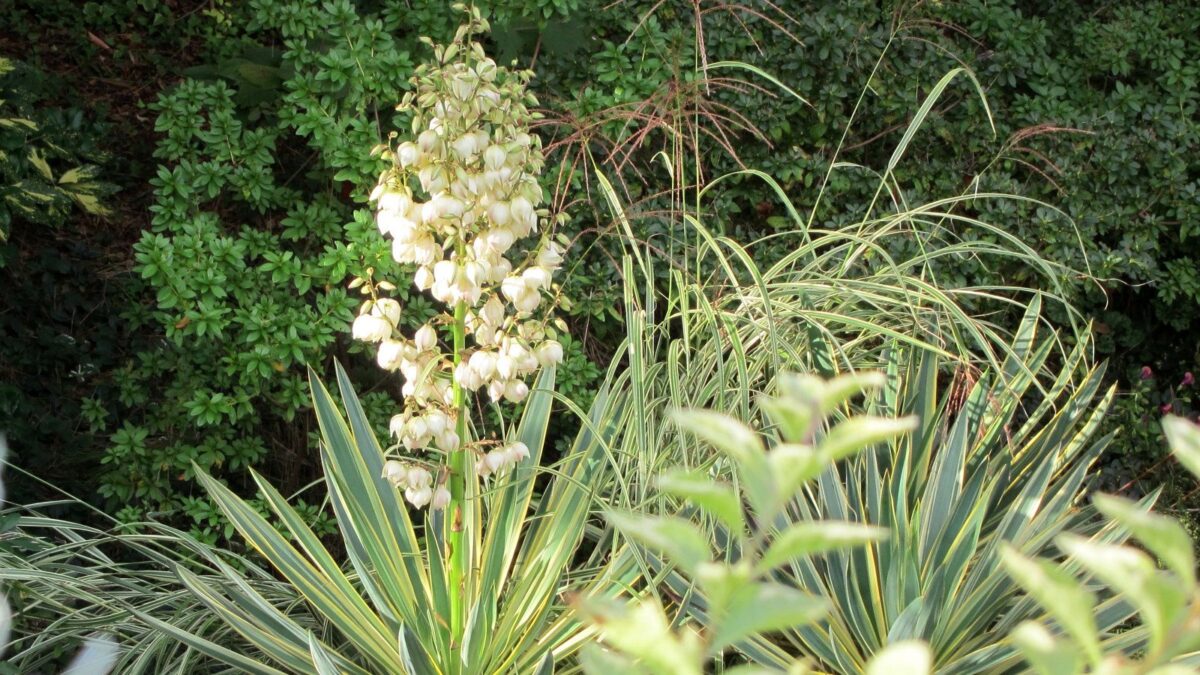
Image credit: cultivar413 @flickr
This yucca plant grows up to 3 feet tall and is prized for its striking, creamy white bell-shaped flowers that rise above spiky, architectural foliage. Its bold, sculptural form adds texture and visual interest to any garden design.
Highly deer and rabbit-resistant, yucca is an excellent choice for gardens in areas where wildlife browsing is a concern. It thrives in full sun and well-drained soil, making it a low-maintenance, drought-tolerant option for xeriscaping or rock gardens.
With its dramatic silhouette and elegant blooms, this yucca can serve as a standout accent plant or be grouped for a modern, desert-inspired landscape that boosts curb appeal with minimal upkeep.
12. Azalea (Rhododendron)
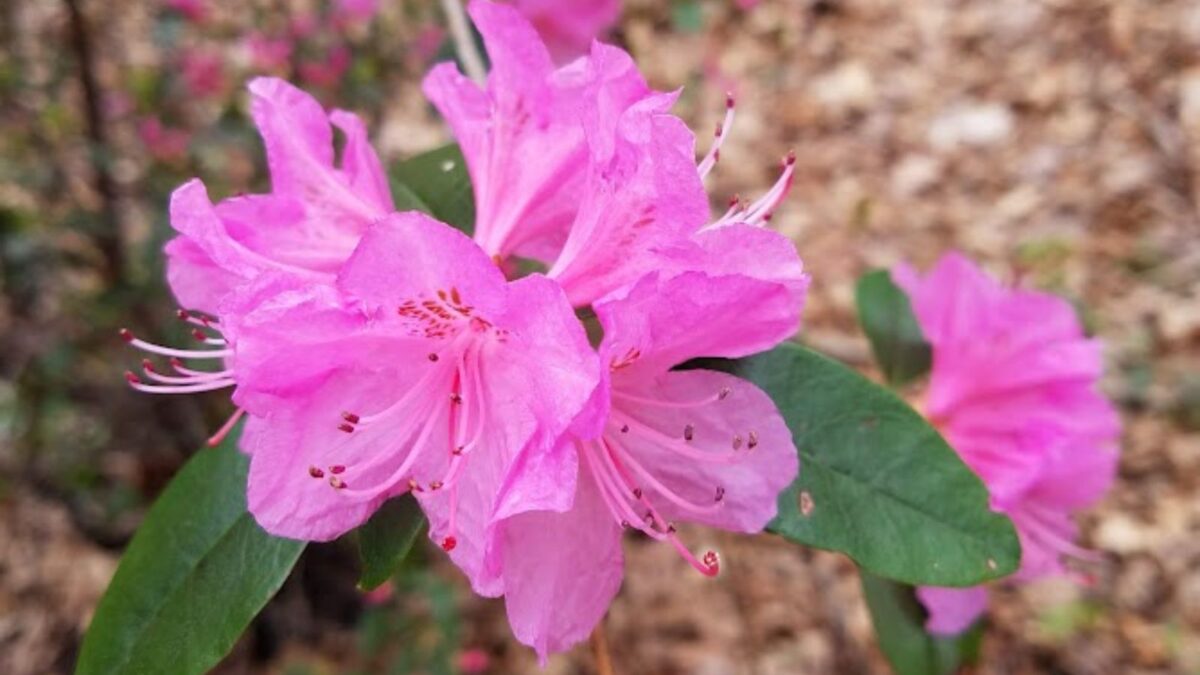
Image credit: Backyard Garden Lover
Azalea is a charming, small shrub known for its showy blooms that brighten gardens in white, pink, red, and occasionally yellow shades. Typically growing between 3 to 6 feet tall, azaleas make a beautiful addition to foundation plantings, borders, or shaded garden beds.
These shrubs thrive in partial shade with well-drained, acidic soil and benefit from regular watering during dry periods. Their dense foliage provides a lush backdrop that showcases their vibrant flowers in spring, creating a stunning burst of color that instantly enhances curb appeal.
Azaleas are versatile in design—use them as mass plantings for a cottage-style look, as colorful accents along walkways, or even in containers for patios. Their springtime blooms bring a welcoming, cheerful atmosphere to any outdoor space.
13. Western Arborvitae (Thuja)
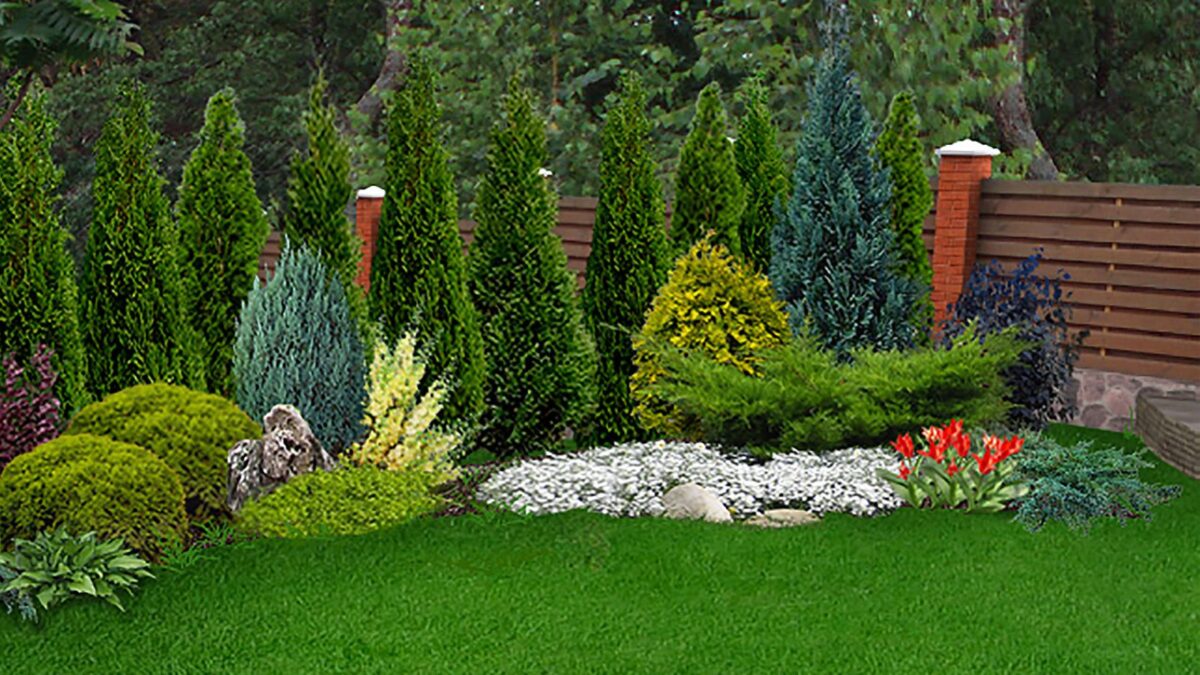
Image Credit: Depositphotos
One of the most popular non-flowering shrubs, thuja (also known as arborvitae), is prized for its easy maintenance and versatile use in landscaping. With its dense, evergreen foliage and naturally pyramidal shape, thuja is often used to create neat, attractive edging, hedges, and privacy screens.
Thriving in full sun to partial shade and adaptable to a wide range of soil types, thuja grows steadily and requires minimal pruning to maintain its shape. Its year-round greenery adds structure and definition to gardens and yards, providing a classic backdrop that complements flowering plants and seasonal color.
Because of its low upkeep and tidy appearance, thuja is a go-to choice for homeowners looking to boost curb appeal with clean lines and lasting greenery.
Here are the best companion plants for arbovitae.
14. Hortensia (Hydrangea)
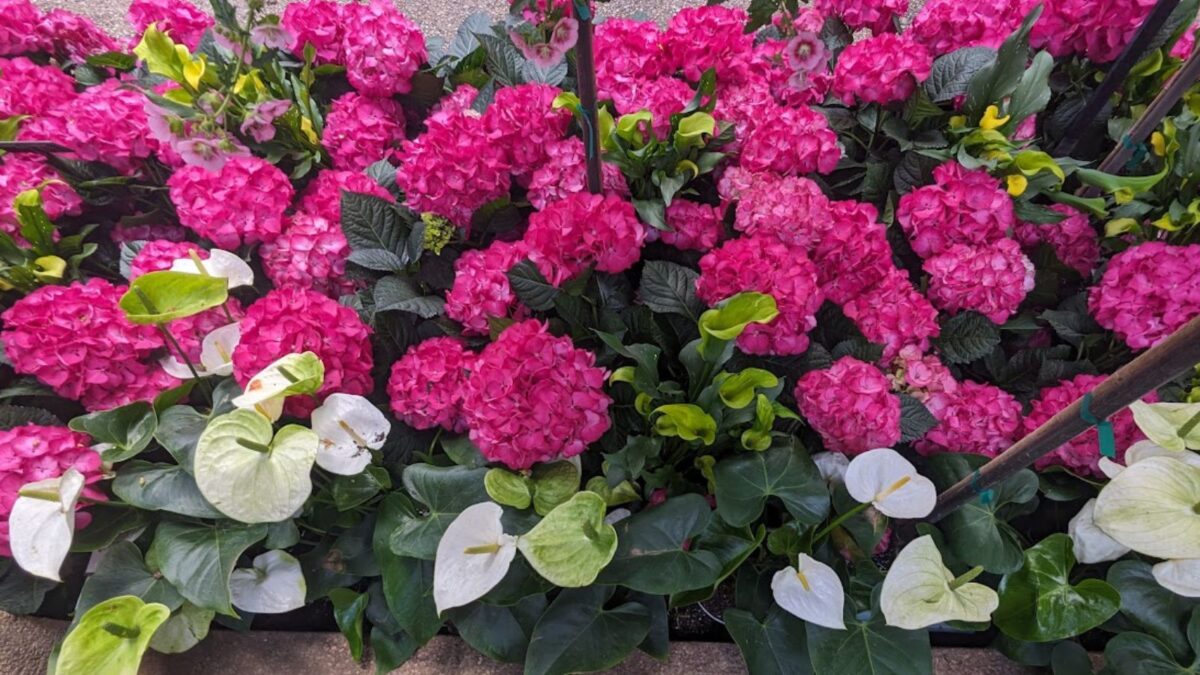
Image credit: Backyard Garden Lover.
Hydrangeas are a homeowner’s favorite, featuring big, showy flowers in a variety of colors, from pink to blue, purple, white, and light greens, depending on the variety you planted.
If you’d like to learn more about growing hydrangeas on your property, take a look at these quick guides:
15. Japanese Spindle (Euonymus Japonicus)
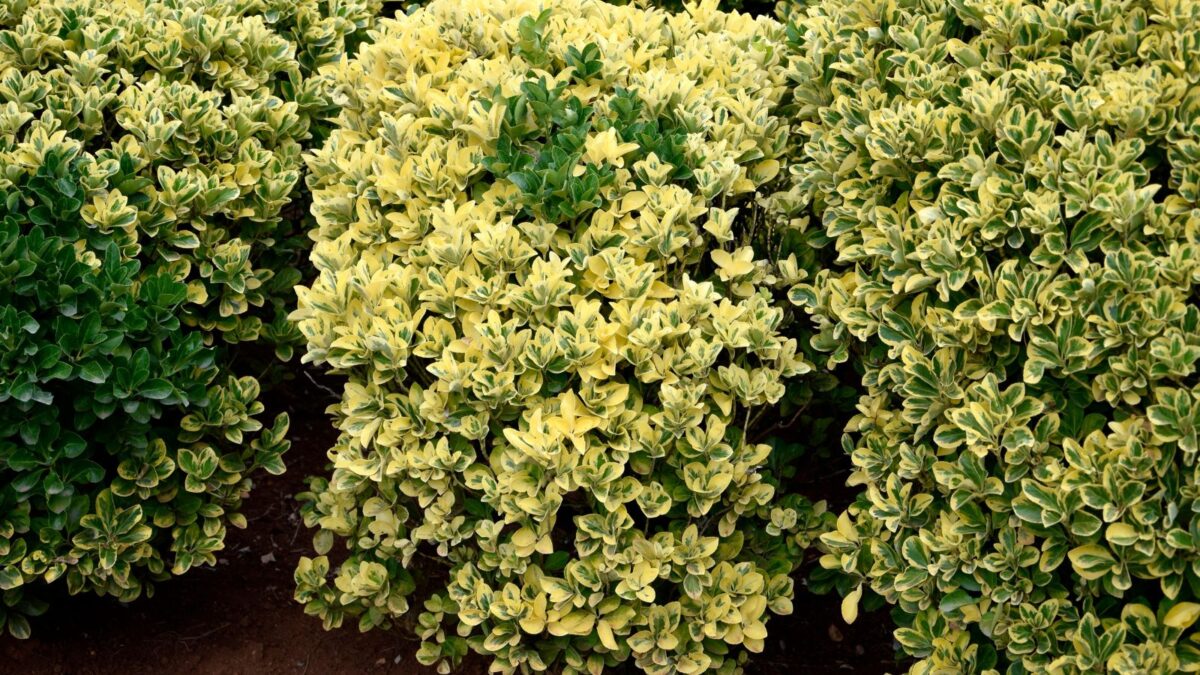
Image Credit: Depositphotos
With its drought-tolerant nature and stunning multicolored foliage, this shrub is an excellent choice for creating vibrant hedges or borders. Its leaves often showcase a rich blend of colors—ranging from deep greens to fiery reds, purples, or golden hues—providing year-round visual interest.
Thriving in full sun to partial shade and well-drained soil, this shrub requires minimal maintenance once established. Its combination of durability and dynamic color makes it perfect for adding texture and life to your landscape while boosting curb appeal with a splash of natural artistry.
How to Care for Your Landscaping Shrubs
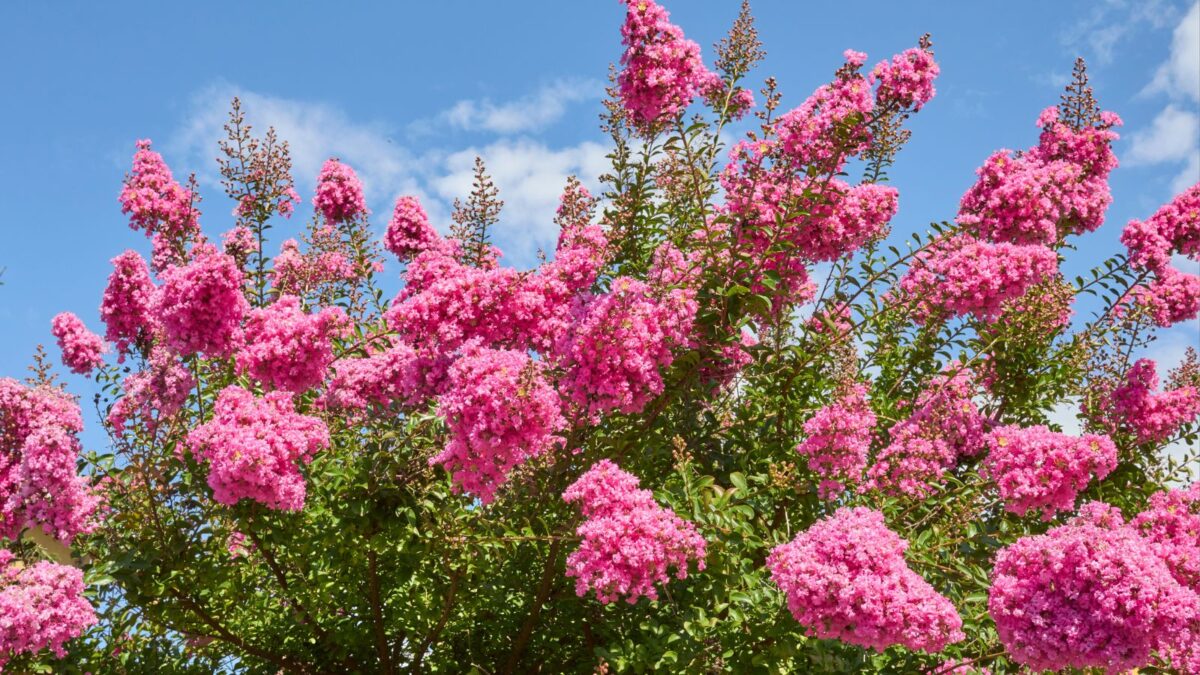
Image Credit: Depositphotos
As with any other new plant, you need to give them extra attention after planting your shrubs. Ensure you water them regularly, fertilize them as needed, and trim them before they grow weirdly.
Occasionally, you might need to part with one of your shrubs. Don’t delay if you see disease cropping up, or you’ll lose more than one sick shrub. If you keep a good eye on your shrubs, you might be able to see and act on insect infestation. If possible, use natural insecticides and fertilizers.
Shrubs should have enough space between them. Every plant requires a minimum specified area. When arranged in rows like hedgerows, shrubs give a good impression.
Check the soil before planting shrubs to ensure you have the right soil for your shrub. You don’t want an acidic soil for a non-acidic plant.

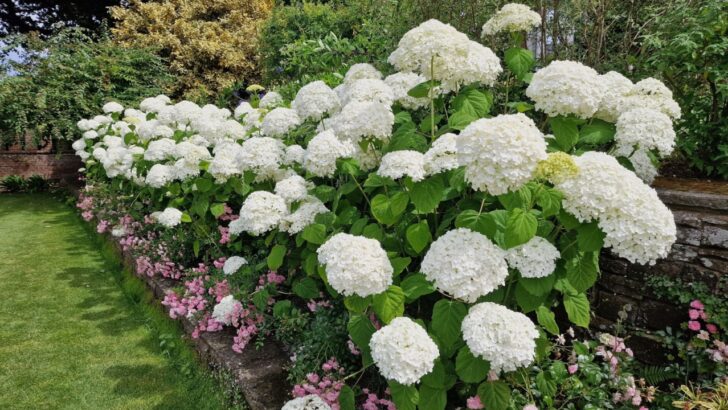

Best Landscaping Ideas For Your Home
Thursday 11th of February 2021
[…] Landscape Shrub Ideas For Your Home […]
5 Adorable Garden Angels To Bring Peace And Harmony To Your Garden
Tuesday 23rd of June 2020
[…] The classic iconography of angels adds a timeless look to the design of your garden and helps create a stylish space, working particularly well with muted colors and evergreen landscape shrubs. […]
Easy Care Plants For A Stunning Butterfly Garden
Monday 27th of May 2019
[…] bush or Buddleia provides the ultimate easy care shrub for the butterfly gardening. With over 100 species and cultivars, there’s bound to be one […]
Large Outdoor Planters You'll Love On Your Patio
Monday 10th of December 2018
[…] planters out in the garden area, providing a contrast in color, size and texture to just about any landscape that you currently have. If the exterior of your home is kind of lackluster, a couple larger […]
Cveta's Mediterranean Style Garden
Friday 20th of April 2018
[…] didn’t stop with flowers. She planted some shrubs and a vegetable garden too. As flowers and shrubs come alive this spring, Cveta will share more […]